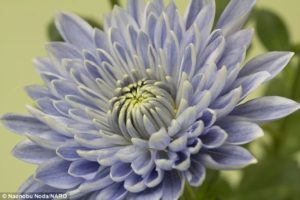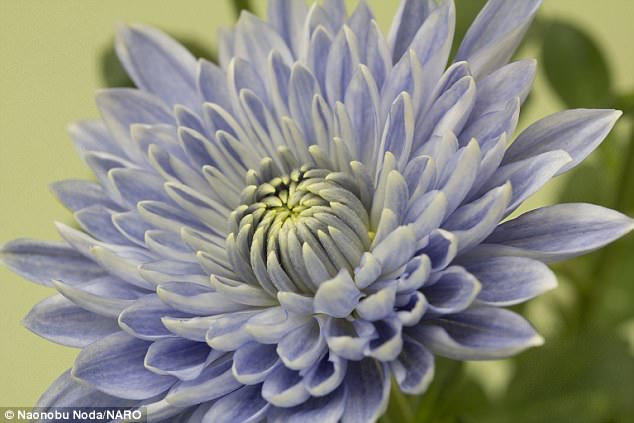
Flowers have plenty of meanings. For example, red carnations symbolize deep love, white represents pure love, and yellow is meant for dejection. There are meanings for every color flower in the rainbow, except blue.
That’s because a true blue flower doesn’t exist. Until now.
Sure, there are flowers that look blue, but according to scientists, they aren’t a true blue. Rather, they are a shade of light violet. So, a team of international botanists based in Japan decided to embark on a mission to see if they could create the world’s first true blue flower. It took them 13 years of research and genetic modification, but they have finally created a stunning bunch of chrysanthemums to show off.
In order to develop their creation, researchers had to manipulate genes from existing blueish flowers as a way to trigger the natural production of a pigment called delphinidin-based anthocyanins. Bluish and violet flowers produce more of this pigment naturally, so scientists believe that if they combined the genes of two really colorful flowers, their creation would be quite vibrant.
So they took the DNA from butterfly pea and Canterbury bell flowers and transferred them into a common plant bug. The microscopic bug then carried the genes into a chrysanthemum plant, Scientific American reports. Then, about a year after the entire process started, seeds were taken from the chrysanthemum plant. Soon after, the first blue petals emerged.
However, the chrysanthemums in question aren’t all uniformly blue, and the researcher’s plants boast different vibrancies of the same color. Despite the shade differences, these plants are the first to be verified as “true blue” by the United Kingdom Royal Horticulture Society.
Lead author on the study Dr. Naonobu Noda explained to The Daily Mail how this breakthrough can help to grow the floral industry worldwide. He said:
“This is a flower with three parents in effect, coming from the chrysanthemum, butterfly pea and Canterbury bell, which was very difficult and time-consuming to create. This technique could be applied to other plants not possessing blue flower cultivars, for example roses and dahlias.”
With their exceptionally interesting find, Noda believes his team can go far and genetically modify existing plants to make different colors as per what the market wants.
What’s next for the team? The quest for a pure black flower.




